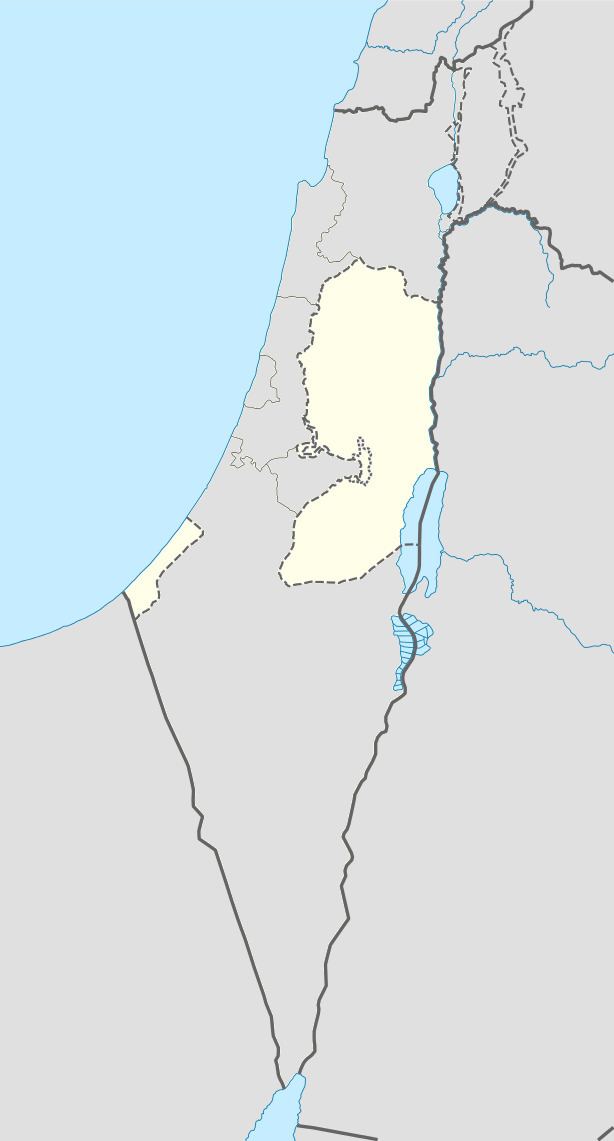Location West Bank Periods Bronze Age, Iron Age | Area 180 dunam
0.18 km² Period Bronze Age | |
 | ||
Weather 13°C, Wind W at 3 km/h, 74% Humidity | ||
Tirzah (Hebrew: תִּרְצָה) was a town in the Samarian highlands NE of Shechem; it is generally identified with Tell el-Far'ah (North), NE of modern Nablus, in the immediate vicinity of the Palestinian village of Wadi al-Far'a and the Far'a refugee camp, although Conder and Kitchener suggested that the ancient city may have actually been where Tayasir (Teiâsīr) is now located, based on its phonemes. The present identification is located in a valley named Wadi Far'a in Arabic and Tirzah Valley or Nahal Tirza in Hebrew.
Contents
In the Bible
The town of Tirzah is first mentioned in the Bible in Joshua 12:24 as having had a king whom the Israelites smote; it is not mentioned again until after the period of the United Monarchy.
During the time of King Jeroboam, Tirzah is mentioned as the place where Abijah, son of Jeroboam, died as a result of illness (1 Kings 14:17). Later Tirzah is described as a capital of the northern kingdom of Israel during the reigns of Baasha, Elah, Zimri and Omri (1 Kings 15:33, 1 Kings 16:8, 1 Kings 16:23). The royal palace at Tirzah was set on fire by Zimri when he was faced with having to surrender to Omri. Omri reigned from Tirzah for six years after which he moved Israel's capital to Samaria.
Tirzah is mentioned in 2 Kings 15:14, when Menahem went from Tirzah to Samaria, assassinated King Shallum and became King of Israel.
Tirzah is mentioned in Song of Songs 6:4, where the lover compares his beloved's beauty to that of Tirzah. If the authorship of Song of Songs can be attributed to Solomon, then this is a reference to the city during the United Monarchy. However, Song of Songs provides no definite historical context to allow it to be dated on that basis.
Tell el-Far'ah (North)
The archaeological site is a 180 dunam (0.18 km²) tell in the hills of Samaria, northeast of Nablus, in what is currently known as the West Bank; it has been identified with the biblical city of Tirzah.
The archaeological site is called Tell el-Far'ah (North) in order to distinguish it from Tell el-Far'ah (South), an archaeological site south of Gaza.
Excavations were undertaken at Tell el-Far'ah between 1946 and 1960 for nine seasons by École Biblique under the direction of Roland de Vaux
The site was occupied in the Neolithic and Chalcolithic eras, and became progressively more populated. Finds from the earliest levels of settlement excavated by Dorothy Garrod in 1928 were suggested to date to the PPNB period.
During the Early Bronze Age, Tell el-Far'ah had ramparts and domestic housing units. The earliest pottery oven of its kind was excavated here; it had two chambers that allowed separation between the vessels being fired and the open flame. This type of pottery oven continued to be used in the region until the Roman period. A temple and an olive press were also uncovered. Town planning is clearly evident at the site. The western gate in the town wall was rebuilt several times during this period. The excavations indicate developing urbanization and the presence of new populations. However, the town was abandoned in the middle of the third millennium BCE, and remained so for approximately 600 years.
In the Middle Bronze Age II, there was a small settlement on the site that used the remnants of the older town walls for protection. In the 1700s the population expanded and a new wall was built, but it enclosed a smaller area than the older city. The Late Bronze Age remains indicate that there was no major urban development during this period.
Tell el-Far'ah was an important town in the early Iron Age, the center of a network of villages, one of five such networks that make up the Israelite settlement, starting around 1200 BCE, in the highlands between Jerusalem and the Jezreel Valley. Excavations from the Iron Age levels have produced numerous artifacts, including various figurines, arrowheads, spindle whorls, a model sanctuary, and Four room houses. The figurines include cow heads, cows nursing calves, horses, tambourine players, and figurines representing Asherah.
